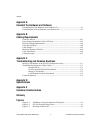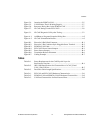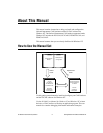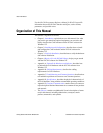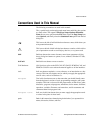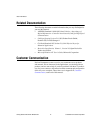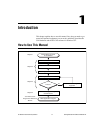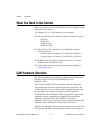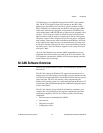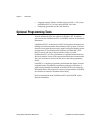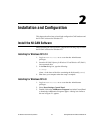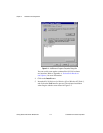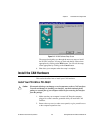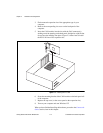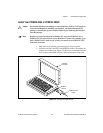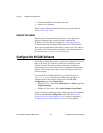
Chapter 1 Introduction
©
National Instruments Corporation 1-3 Getting Started with CAN for Windows NT
CAN interfacing is accomplished using the Intel 82527 CAN controller
chip. The PCI-CAN physical layer fully conforms to the ISO 11898
physical layer specification for CAN and is optically isolated to 500 V.
PCI-CAN boards are available with two physical connector types: DB-9
D-Sub and Combicon-style pluggable screw terminals. PCMCIA-CAN
cables include both a DB-9 D-Sub and a Combicon-style pluggable screw
terminal. The CAN physical layer on PCI-CAN cards can be powered
either internally (from the card) or externally (from the bus cable power).
The power source for the CAN physical layer for each port is configured
with a jumper. There are two cables available for the PCMCIA-CAN cards.
In one cable the CAN physical layer is powered internally (from the card).
In the other cable the CAN physical layer is powered externally (from the
bus cable power). The CAN hardware supports a wide variety of transfer
rates up to 1 Mb/s.
All of the CAN hardware uses the Intel 386EX embedded processor to
implement time-critical features provided by the NI-CAN software. The
CAN hardware communicates with the NI-CAN driver through on-board
shared memory and an interrupt.
NI-CAN Software Overview
The NI-CAN software includes a native, 32-bit multitasking Windows NT
kernel driver.
The NI-CAN software for Windows NT supports the concurrent use of
multiple types of CAN hardware. For example, you can communicate with
CAN devices through both a PCI-CAN and PCI-CAN/2 in the same system
at the same time. The NI-CAN software is fully integrated into the
Windows NT operating system. It is configurable through the Windows NT
Control Panel and uninstallable through the Add/Remove Programs applet
of the Control Panel.
The NI-CAN software, along with the CAN hardware, transforms your
computer into a CAN interface with complete communications and bus
management capability. The NI-CAN software includes the following
components:
• Firmware (runs on embedded Intel 386EX)
• Device driver
• Diagnostic test utility
• Configuration utility



